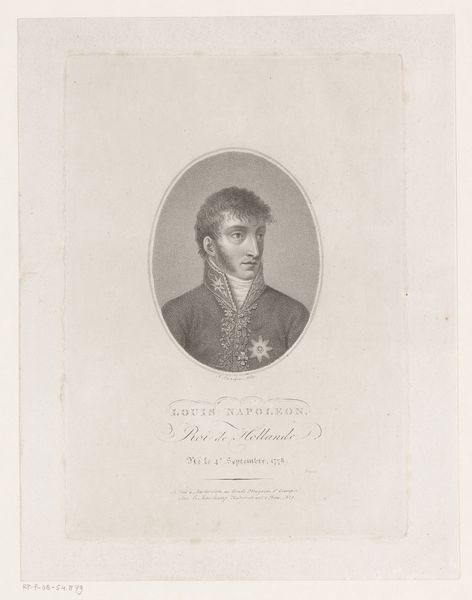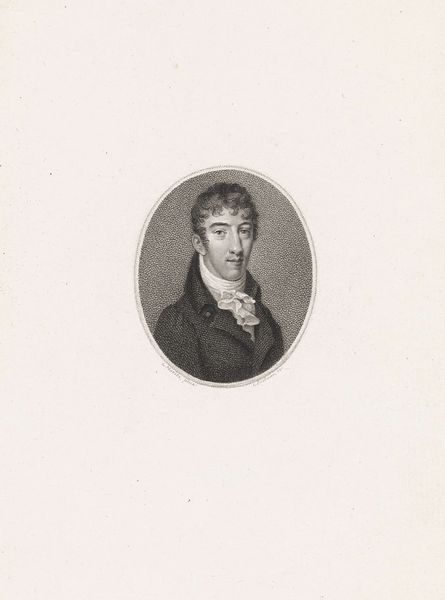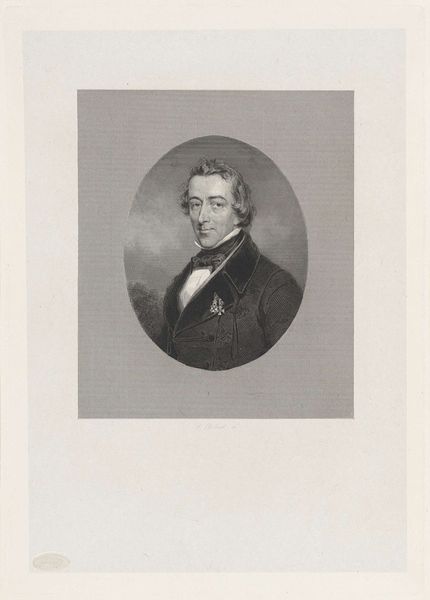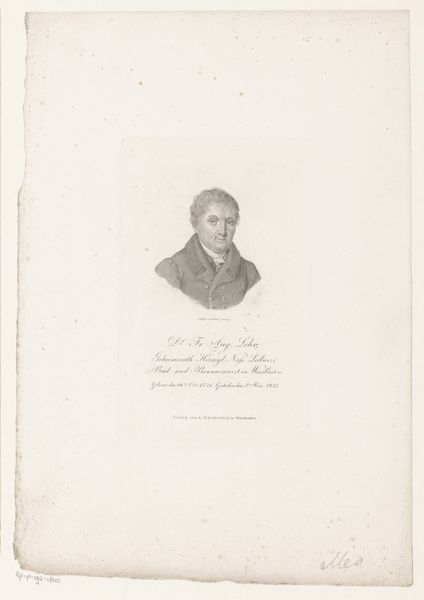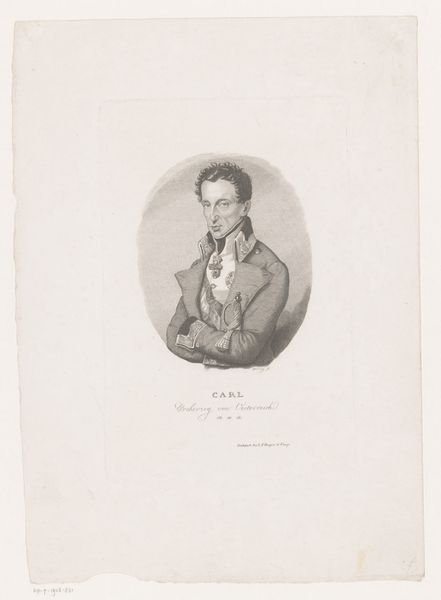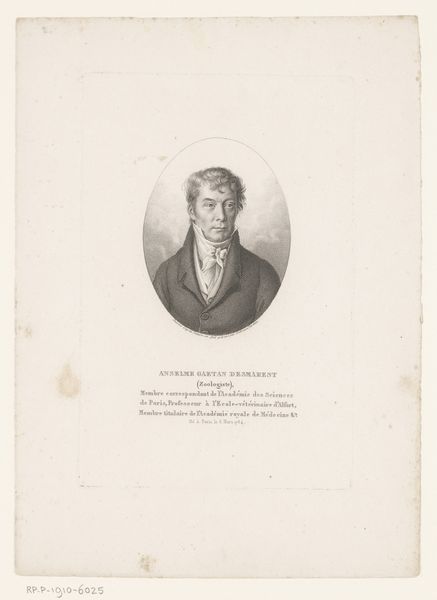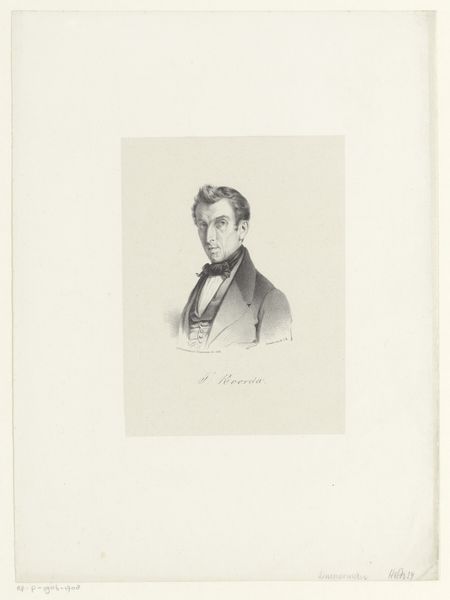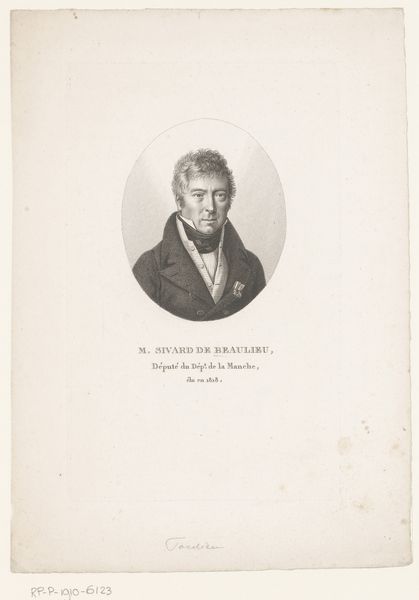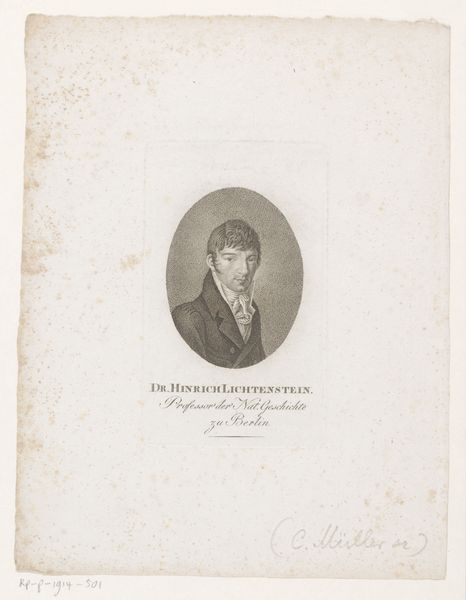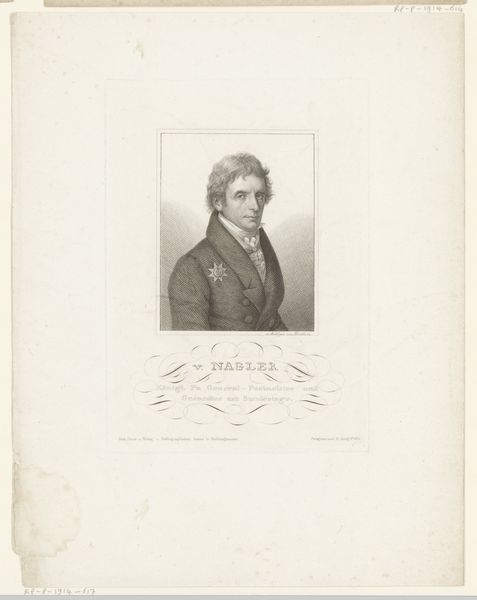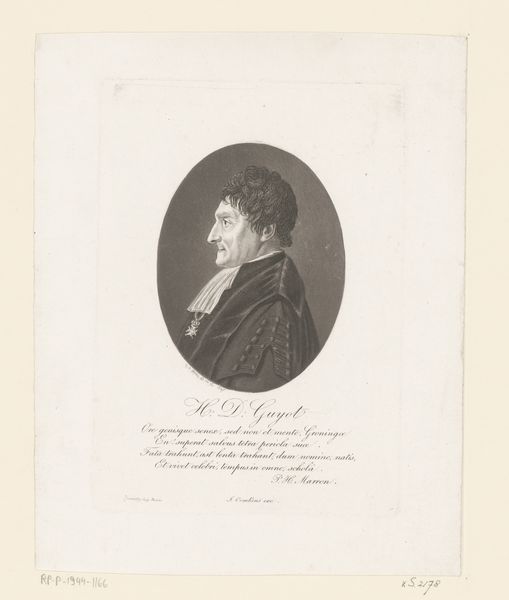
#
portrait
#
neoclacissism
# print
#
history-painting
Dimensions: height 215 mm, width 149 mm
Copyright: Rijks Museum: Open Domain
Curator: Editor: So, here we have a print of "Portret van Lodewijk Napoleon, koning van Holland," created between 1789 and 1822 by Jan Willem Caspari. It’s a fascinating historical portrait, neatly framed within an oval. How should we think about this work? Curator: As a print, its very essence speaks of reproducibility, of access. This isn't a singular, unique object labored over by one artisan for a wealthy patron. Instead, think about the social implications of printmaking in this period. Editor: I see, it's less about the individual artistic touch and more about mass production... so how was this work received? Curator: Precisely. This image of Louis Napoleon, circulated widely, served a specific purpose. Consider who was consuming these prints. How does this act as a form of nation-building? Are we seeing propaganda in action, even subtly? What do we know of the printer's ties to political movements? Also, look at the costume. Does the depiction flatter or subtly criticize, reflecting tensions between France and the Netherlands at the time? Editor: So, understanding the materials—the ink, the paper, the printing process itself—helps reveal how the artwork functioned within its social and political landscape. What has stuck with me the most is understanding print as an engine of influence. Curator: Exactly. Next time you're facing artwork from a similar time ask yourself whose story are we being sold?
Comments
No comments
Be the first to comment and join the conversation on the ultimate creative platform.
